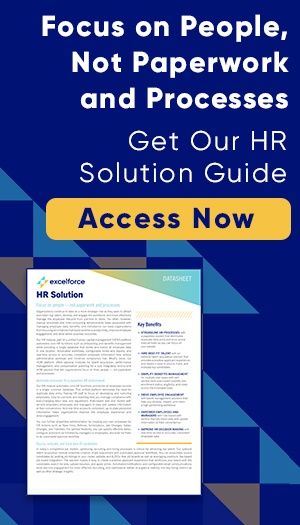Sign up for a free demo!
- Excelforce
- Industry Insights
- How to Create an Employee Incentive Compensation Plan
How to Create an Employee Incentive Compensation Plan
By: Jay Mittelman
Bonuses are not just for senior executives anymore. Many companies now offer performance-based incentives to rank-and-file personnel, too. But serious problems can occur when these employee compensation incentive plans are too strong, poorly designed, or insufficiently monitored.
A Fresh Look at Incentive Compensation
For example, in a widely reported recent case, a large national bank set aggressive sales goals that came with financial rewards. To meet their goals, bank employees opened new credit card accounts in customers’ names without their knowledge or consent. The resulting fallout was a major embarrassment for the employer.
Determine what the goal is of your employee incentives is
Before thinking about the potential size of a bonus award in your employee incentive compensation plan, it’s important to consider what kind of behavior your company is hoping to motivate.
According to the same WorldatWork survey, most employers tie bonuses and incentive compensation to multiple objectives.
Specifically, 70% based bonuses on a combination of organizational, divisional, and individual performance. About one-third use more limited criteria. Determining your criteria for your employee incentive compensation plan typically varies according to two factors:
- Company philosophy. You may want to instill in your workforce a spirit of cooperation by showing employees that, at least in part, their financial destinies are linked to coworker performance. If that’s the case, your bonus formula might include organizational performance metrics, such as overall customer relationships or how well the company communicates internally and externally.
- Individualized assessment of employee motivation. If you focus on differences in how particular employees are motivated, you might conclude that individual performance is the appropriate criterion for some and organizational performance for others. Then your approach might be to custom-fit your bonus formula to the individual or department. For instance, you could base bonuses on production or on contributing new ideas.
Connecting your base pay with your employee incentive compensation plan
When establishing an employee incentive compensation plan, it’s important to harmonize incentives with your strategy on base pay. Let’s say you try to give at least modest annual raises to employees whose performance is merely acceptable, and perhaps larger raises to top achievers. In that case, you might be less ambitious with your bonus program.
Obviously, there are only so many dollars available in the compensation budget. Also, think about the message you want to communicate through your employee incentive compensation plan. If you give automatic raises, even small ones, you’re saying that performance aside, all a person has to do to get a raise is stick around for another year.
If what you’re really hoping to say is that improved performance will pay off, a small standard raise, even if paired with a small bonus, is unlikely to be motivational.
If you’ve moved away from the practice of cost-of-living style raises, you may be able to award larger bonuses that do have the power to motivate. That also doesn’t lock you into an ever-growing base pay commitment.
Keep in mind, a generous bonus could be a waste of money if its structure isn’t carefully considered and communicated effectively to employees. In designing the bonus, you need to determine the specific behavior you wish to reward, and how it will be measured. Then communicate your expectations clearly to your employees.
Monitoring your employee performance towards their incentive compensation
Be aware of the possibility that some employees will be motivated to produce results that look good in the short run, but could have harmful effects long term. This is of particular concern when financial criteria such as revenue generation or operating profits are involved in your employee incentive compensation plan.
For example, if sales goals are highly aggressive and the bonus will represent a substantial proportion of the employee’s income, the risk of ethical lapses can be high. That means careful supervision will be important — particularly with newer employees.
When bonuses are based on the bottom line, guard against a manager’s aggressive cost-cutting that can produce deceptive short-term results but negatively affect growth in later years.
It’s also critical that employees actually have the ability, within the confines of their job responsibilities, to influence the desired outcomes that you’ve communicated. For instance, if greater accuracy is a stated objective, is it reasonable to expect an employee to find a way to reduce errors?
Naturally, not all employee incentive compensation plan bonus criteria are measurable. Some goals, such as “improve the level of cooperation among employees in your department,” will require a subjective assessment. But you can still give midyear feedback and possibly coaching as well.
Finally, before an employee incentive compensation plan is cast in stone, you may find it useful to discuss it with your employees. People are motivated differently, so connecting on an individual basis where possible may be helpful. That gives you the opportunity to modify each plan to fit the needs of each employee.
Designing an effective compensation program isn’t necessarily an intuitive process, but it also isn’t rocket science. An employee incentive compensation plan is also not the only step towards optimizing your company benefits.
A benefits management platform, like the benefits platform from Excelforce, can not only help you determine the best employee incentive compensation plan for your business but every other type of employee benefits as well. To learn more about how Excelforce is already helping countless businesses with their benefits management, contact us today!


